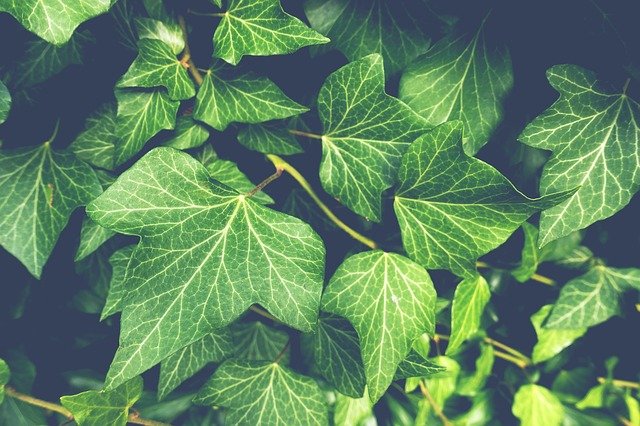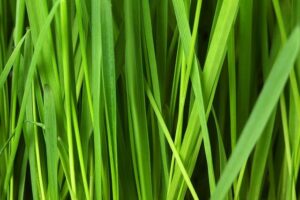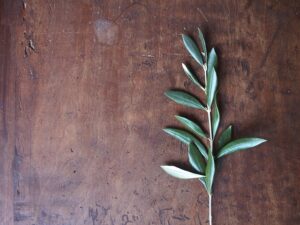Ivy can make an excellent bright-light houseplant. It can grow long and lush, bringing a touch of nature indoors. Growing ivy indoors is simple if you understand what makes an ivy plant happy. Let’s learn more about ivy and proper ivy plant care.
Ivies are popular in cultivation within their native range and in compatible climates elsewhere for their evergreen foliage, attracting wildlife, and adaptable design uses in narrow planting spaces and on tall or wide walls for aesthetic addition or to hide unsightly walls, fences, and tree stumps. For horticultural use, numerous cultivars with variegated foliage and/or unusual leaf shapes have been selected.
Ivy houseplants come in a variety of colours and shapes. These are some examples:
- English ivy (Hedera helix)
English ivy (Hedera helix) plants are excellent climbers, clinging to almost any surface via small roots that grow along the stems. English ivy care is simple, so you can plant it in remote and difficult-to-reach areas without worry.
Plant English ivy in a shady spot with organic soil. Before planting, amend your soil with compost if it is deficient in organic matter. Plants should be spaced 18 to 24 inches (46-61 cm) apart, or 1 foot (31 cm) apart for faster coverage.
The vines can grow to be 50 feet (15 metres) long or more, but don’t expect immediate results. The vines grow slowly the first year after planting, but they begin to grow noticeably the second year. By the third year, the plants have taken off and are quickly covering trellises, walls, fences, trees, and anything else they come into contact with.
These plants are both useful and beautiful. Grow English ivy as a trellis screen or as a cover for unsightly walls and structures to hide unsightly views. Because it prefers shade, the vines make an excellent groundcover under a tree where grass will not grow.
English ivy can be grown indoors in pots with a stake or other vertical structure for climbing, or in hanging baskets where it can tumble over the edges. Grow it in a pot with a shaped wire frame to make a topiary design. Variegated varieties are especially appealing when planted in this manner.
- Irish ivy (Hedera hibernica)
It is an evergreen climbing plant, growing to 20–30 m high where suitable surfaces (trees, cliffs, walls) are available, and also growing as ground cover where there are no vertical surfaces. It climbs by means of aerial rootlets which cling to the substrate. Native to the Atlantic region, it has been cultivated and can appear in the wild outside its original area, along the Atlantic coast from Portugal, Spain, France, Ireland, British Isles, Germany, Scandinavian countries, and Baltic Sea. One way in which it differs from Hedera helix (Common Ivy) is that the light veins on its leaves are less pronounced.
The bark is initially green, but quickly turns grey. The bark on old branches is finely furrowed and light grey. Buds are egg-shaped and bright green, almost hidden by the leaf base. The leaves are ovoid or with five triangular lobes and have entire margins. The upper surface is a glossy dark green with light ribs, and the underside is a pale green. The leaves of flowering shoots, on the other hand, are oval with entire margins. Flowering takes place between September and October. Blue-black berries are the fruits. The entire plant, as well as the berries, are slightly poisonous.
- Japanese ivy (Hedera rhombea)
Boston ivy plants (Parthenocissus tricuspidata) are attractive climbing vines that cover the outside walls of many older buildings, especially in Boston. It is the plant that gives rise to the term “Ivy League,” and it can be found on many prestigious college campuses. Boston ivy, also known as Japanese ivy, can quickly take over the area where it is planted, climbing by tendrils on any nearby support.
If you like the look of the shiny leaves but don’t want to deal with the plant’s aggressive behaviour, grow Boston ivy as houseplants or in containers outside.
When planting Boston ivy for indoor use, select a container that will allow for the desired amount of growth. Larger containers allow for more development and growth. Place the newly planted container in a location that receives some direct sunlight.
Boston ivy care indoors, regardless of location, will include pruning of the rapid growth. Full or excessive direct sunlight, on the other hand, may burn the leaves or cause browning tips on Boston ivy plants.
Boston ivy can be grown as a houseplant that climbs on a trellis or other structure. This is simple because Boston ivy plants climb easily via tendrils with adhesive discs. When planting Boston ivy indoors, avoid allowing it to climb on painted walls because it will damage the paint.
Boston ivy plants that are not supported will soon cascade over the sides of the pot. As part of Boston ivy care, trim the leaves at the tips. This promotes fuller growth on the draping stems and aids in the plant’s ability to fill the container.
- Algerian ivy (Hedera canariensis)
Evergreen vines can be used to conceal and soften walls and fences. They can also be used as groundcovers in difficult-to-grow areas of the garden, such as slopes or other areas where grass struggles to establish. Algerian ivy is one such plant that will grow quickly where turf or other plants will not. Continue reading to learn how to grow Algerian ivy.
Canary Island ivy, Canary ivy, or Madeira ivy are all names for Algerian ivy (Hedera algeriensis or Hedera canariensis). It is an evergreen vine native to Africa’s western regions and islands. Algerian ivy thrives in USDA zones 7-11. It will grow in full sun, but it may be stunted and will require frequent watering. It prefers to grow in partial to complete shade. Algerian ivy comes in several variegated varieties, including ‘Gloire de Marengo’ and ‘Canary Cream.’ When planted in deep shade, however, the variegated varieties may revert to all green.
Algerian ivy vines can grow to be 40 feet (12 metres) long if grown in the right conditions. They use aerial roots to climb up walls or spread across the ground. Algerian ivy grows in a variety of soil types, including clay, sandy loam, and chalky, acidic soil. It does, however, prefer a sheltered location away from drying winds.
Although Algerian ivy produces flowers and fruit, the flowers are small, inconspicuous, and yellow to green in colour. Algerian ivy’s foliage and berries are toxic, and this should be considered before growing Algerian ivy in areas frequented by small children and pets.
- Persian ivy (Hedera colchica)
Persian ivy has large, thick, leathery leaves that form a dense groundcover and are an excellent choice for shady areas where grass will not grow. It can be mowed with a high-powered rotary mower. It can also be trained to look like a trellis, arbour, wall, or topiary. and is an excellent choice for controlling erosion on slopes or hills. It is not frost hardy and should be heavily mulched.
Flowers are produced from late summer to late autumn, and are individually small, greenish, produced in large numbers in umbels, and extremely rich in nectar, which is an important food source for bees and other insects. It blooms in September and bears fruit during or after the winter. When ripe, the fruits are berries that are globular and black. Many birds rely on them as a source of food.
- Nepal ivy (Hedera nepalensis)
Hedera nepalensis (Himalayan ivy, chang chun teng) is a perennial Ivy (genus Hedera) native to Nepal and Bhutan, as well as Afghanistan, Pakistan, India, China, Laos, Myanmar, Thailand, and Vietnam at elevations ranging from 1000–3000 m. Plants can grow up to 30 m tall, with simple leaves 2–15 cm long and yellow flowers.
- Russian ivy (Hedera pastuchovii)
It is an evergreen woody climber that grows to 20–30 m in mixed forests where suitable trees are available, but it does not thrive as a groundcover plant. It climbs using aerial rootlets that cling to the substrate.
Thin, glossy, light green leaves, 10–12 cm x 6–9 cm, often rounded and rarely oblong-elliptic, deeply or shallowly lobed, cordate or cuneate at the base.
A rare relic species of the Greater Caucasus (Balakan, Zagatala, Gakh, Sheki, and Khachmaz regions), as well as the Talysh region (Astara, Lankaran, Masalli regions). Azerbaijan’s neighbours include Eastern Transcaucasia and Iran. Habitat in lowland forests up to the middle mountain zone, primarily along forest edges and clearings, climbing high into trees rather than scrambling over rocks.
The most common type of ivy grown in the home is English ivy cultivars, but all can be found if you look hard enough. Each variety of inside ivy plant also comes in a variety of cultivars. This means that you can choose from a dizzying array of ivies for your home, depending on your preferences for colour (all shades of green or variegated with white, yellow, grey, black, and cream), leaf shape, and growth habits.
Growing Ivy Indoors
Growing ivy indoors is simple as long as you provide what the plant requires. The most important aspect of indoor ivy plant care is light. True ivies require a lot of light. Variegated cultivars can tolerate medium light, but their variegation will become less pronounced in lower light. Inside ivy plants will grow leggy and sickly if not given enough light.
Always check the soil before adding water when watering your ivy. Ivies prefer a slightly dry environment, so let the soil dry out (dry to the touch on top) before watering your ivy plant again. Also, make sure your plant has good drainage because ivy does not like standing water or overly wet soil.
Ivy plants should be fertilised on a regular basis as part of their care. Fertilize your ivy once a month with a water-soluble, nitrogen-rich fertiliser in the spring, summer, and fall. Do not fertilise in the winter because the ivy is dormant and the fertiliser may cause more harm than good.
Washing ivy houseplants on a regular basis helps to remove dust and pests from their leaves. To clean your ivy plant, simply place it in the shower and let the water run over it for a few minutes. If you discover that the plant is infested with pests, you may need to bring the spray closer to the plant to help eliminate all of the pests.
Ivy plant care is simple and rewarding. You will not only enjoy growing ivy indoors, but you will also enjoy the wide variety of ivy plants available.
Is English Ivy Toxic?
Nearly all species of ivy are toxic to small pets such as cats and dogs, though the animals rarely consume enough of the plant to cause death. A toxin found throughout the plant but concentrated primarily on the foliage and leaves is the culprit. If you notice your pet exhibiting any of the symptoms listed below, contact your veterinarian or an animal poison control centre right away.
How to Care for Ivy Plants?
Fertilization
Young plants require extra phosphorus to promote root development. Look for a fertiliser that contains phosphorus, P (the second number on the bag). Apply the recommended amount for each plant per label directions in the soil at the time of planting or at the very least during the first growing season.
Culture
Most ivy cultivars thrive in bright light, but not direct sunlight. They can tolerate low to medium light, but their growth is stunted, and variegated forms may turn completely green. Give a variegated ivy plenty of light to keep its bright colour. Ivies can be grown in a greenhouse or near a north, east, or west window.
Maintenance
English ivy looks best when it is lightly trimmed twice or three times per year. If an ivy patch is outgrowing its boundaries, trim around the edges. If the plant appears shaggy or too tall, use a sturdy lawn mover on the highest setting to prune it. This pruning, which should be done every three to four years, revitalises a tired plant and fills in bare spots.
Pests
Although healthy ivy is pest-resistant, pests such as aphids, spider mites, thrips, and scale insects can cause problems. These pests are usually easy to control by spraying the plant with insecticidal soap on a regular basis, especially if the spray is applied soon after the insects appear. Because insecticidal soap spray kills on contact and has no residual effect, thoroughly wet the foliage. Repeat as necessary. Caterpillars can be a nuisance, and a heavy infestation can quickly strip the ivy’s leaves. Wearing gloves and manually removing caterpillars is an easy way to control the pests. Alternatively, use a product that contains Bacillus thuringiensis, a naturally occurring substance that kills caterpillars as they feed on the plant.
Invasiveness
In several areas, English ivy is classified as invasive, posing a serious threat to the environment and native plant growth. English ivy is best grown in pots and kept on a patio in these areas because the pot keeps the roots contained and prevents them from spreading. Avoid burying the containers in the soil because roots frequently escape through the drainage holes in the bottom of the pot.
Indoor Ivy Care
Place your indoor English ivy in bright, indirect, or filtered light, but not in direct sunlight or next to a south or west-facing window.
When the topmost layer of potting soil feels dry to the touch, water your English ivy plants by pouring water into the soil until it begins to drain from the bottom of the pot. Allow the lower layers of potting soil to dry out, and don’t let the English ivy sit in water that has accumulated in the drainage dish.
Feed your indoor English ivy plants once every two months with one teaspoon of water-soluble 20-20-20 NPK formula fertiliser dissolved in one gallon of water. Fertilize the English ivy once a month if more than 10% of the water drains out of the container.
Trim the English ivy stems as needed to shape or control the ivy’s growth. If you want the English ivy plants to grow larger, repot them when their roots begin to crowd the pot.
Our Best Ivy Plants / Garland Picks
Exquisite dyeing technology endows fake vine ivy leaves with mottled green and clear texture. These ivy garland artificial trellis looks lifelike and will add elegance to your landscape. Each faux ivy vines approx. 244cm long, have 80 leaves, diameter approx. 4cm.Comes with 12 strands artificial ivy garland, 1 pack of green nylon cable zip ties.
Technical Details
Brand: JaosWish
Color: Green
Package Dimensions: 38.1 x 31.3 x 7.2 cm; 250 Grams
Material: Silk, Plastic
Item Weight: 250 g
These fake ivy bush has been so carefully crafted that it even features the vein detail on the leaves, feels real to touch as well as being visually impressive. Take a look at the close-up images to see the detail of the leaf structure. turdy and texture clear leaves are made of fabric, stems are made of plastic, It’s soft, and easily bent or cut down as you need, and adapt to all kinds of weather.
Technical Details
Brand: MARTHA&IVAN
Color: Green
Package Dimensions: 32.5 x 21.1 x 4.7 cm; 240 Grams
Material: Plastic
Item Weight: 240 g
An individual ivy garland is approximately 7 feet long. Each of the ivy garland vines is lined with 80 leaves. The plastic silk leaves are between 1.3 and 1.7 inches in diameter. Each order comes with 12 ivy garland vines, for a total of 85 feet of leafy vines. The ivy vines and their leaves are designed to last a long time. The leaves are made with sturdy fabric, and the vine itself is made with plastic. The vines are sturdy enough to last, but soft enough to be bent, rearranged, or even cut down to your needs. Best of all, the vines are weather resistant, so they can be your favorite decor in rain or shine.
Technical Details
Brand: TMLOUS
Package Dimensions: 2.13 x 0.04 x 0.03 metres
Color: Green
Material: Plastic
Item Weight: 180 g
The material is fabric and silk, artificial leaf vine, looks quite wonderfully realistic and lifelike. Remain green color throughout the year that helps to add to the realism. Can be used for weddings, festivals, parties, home decorations, gardens, fencing, floral tributes, ceiling decoration and many more. particular items to decorate your party, festival celebration, wedding birthday occasion and sweet house etc.
Technical Details
Brand: CCINEE
Color: Green
Package Dimensions: 19.4 x 14.3 x 7 cm; 80 Grams
Material: Silk
Item Weight: 80 g
With pretty blooms and amazingly life-like foliage bursting out of the basket or wall, our artificial English Ivy Vine Hanging Plant is not to be missed, Let you feel yourself in the nature and save your room space. Artificial hanging Ivy Garland is an ideal addition for your flower boxes and windowsills, our silk ivy garland will instill color where it is missing. Ivy vine garland does not require any sort of special care.
Technical Details
Brand: CCINEE
Color: Green
Package Dimensions: 34.9 x 28.3 x 9.2 cm; 430 Grams
Material: Plastic
Item Weight: 430 g








